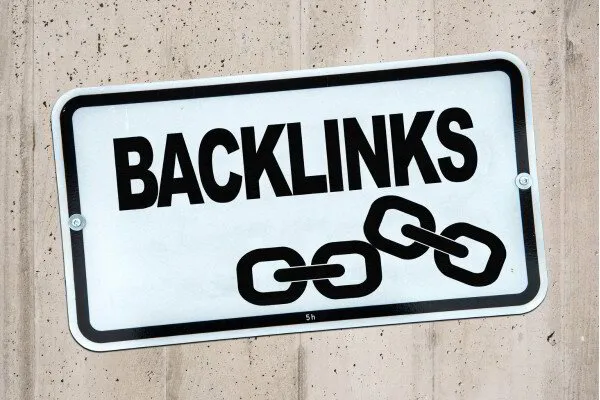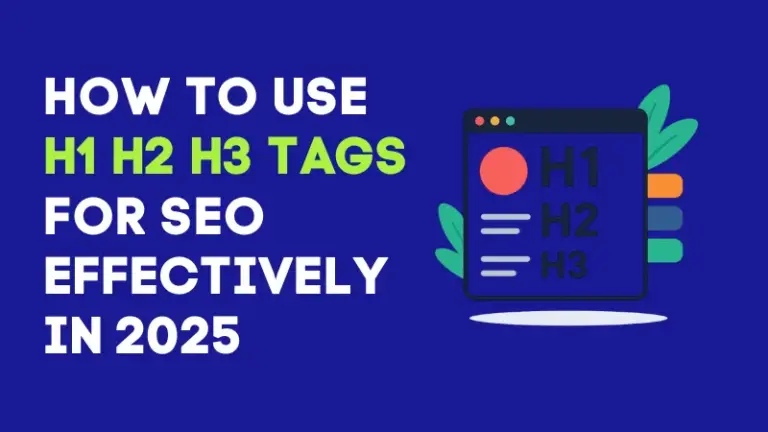What Is SEO Analysis and Why It Matters for Your Site
SEO analysis is like a health checkup for your website. Before you can start boosting rankings or attracting more traffic, you need to understand where you stand.
Think of it as a GPS for your SEO journey—without it, you’re just driving blind. An SEO analysis will reveal where your website is excelling, where it’s slacking, and, most importantly, where the opportunities for growth are hiding.
In this guide, we’ll break down what SEO analysis really is, why it’s essential, the different types of analysis you should be doing, and how to use popular tools (with costs) to get the job done.
Curious to find out how your website measures up?
Let’s get started and turn those SEO weaknesses into strengths!
What Is SEO Analysis?
SEO analysis is your website’s diagnostic tool, helping you see exactly how well your content is performing in organic search.
It’s not just about understanding where you stand—it’s about discovering how to move forward.
Think of it as a comprehensive audit that sheds light on the good, the bad, and the untapped potential of your site’s SEO.
This analysis covers everything from on-page elements—like your content, meta tags, and internal links—to off-page factors such as backlinks. It also digs deep into the technical side, checking for things like site structure, speed, and mobile optimization.
If your pages are loading slowly or missing key backlinks, SEO analysis will expose those issues, allowing you to fix them before they hurt your rankings.
But SEO analysis isn’t just about finding problems—it’s about pinpointing opportunities for growth.
It gives you the data you need to improve keyword rankings, boost organic traffic, and refine your overall SEO strategy.
Think of it as a roadmap for your website’s SEO journey, helping you track your performance, address weak spots, and push toward higher rankings with clear, actionable insights.
Importance of SEO Analysis
Running a website without SEO analysis is like playing a game without knowing the rules—you’re just guessing.
SEO analysis provides the insights needed to not only play the game but also excel at it. If you want your website to stand out and grow its organic visibility, you need to understand how it’s performing and where improvements are necessary.
One of the first things SEO analysis helps with is monitoring website performance, especially in terms of user experience.
Take page load speed, for example—slow-loading pages can send visitors packing, and search engines take note of that. A website that runs fast keeps users engaged, and that’s something both users and search engines reward.
By regularly assessing performance, you can identify any slow spots and fix them before they harm your rankings.
SEO analysis also reveals which content and keywords are resonating with your audience.
What is your audience searching for? What are they interested in? These questions matter because understanding search intent allows you to create content that speaks directly to their needs.
The more relevant your content, the higher the chances of increased engagement, which in turn, raises your website’s exposure.
Beyond content, SEO analysis dives into the technical side of things. Broken links, missing metadata, or improperly formatted pages can all be stumbling blocks for both users and search engines.
These issues may seem small, but they can negatively impact your rankings. Fixing them helps ensure your website is working as it should—smooth, efficient, and user-friendly.
The quality of your backlinks also plays a big role in SEO success. SEO analysis helps you track and evaluate the strength of your backlinks, which in turn, impacts your site’s authority.
Sites with high-quality backlinks are seen as more trustworthy and are likely to perform better in search engine results.
Finally, SEO analysis keeps you competitive. Search engines are always updating their algorithms, and staying ahead of these changes is crucial.
And by regularly analyzing your SEO performance, you can adjust your strategy and stay in tune with the latest trends, giving you an edge over your competitors.
4 Core Approaches to SEO Analysis
1. SEO Content Analysis
Think of SEO content analysis as giving your website’s content a much-needed makeover.
The goal?
To ensure your content not only ranks but truly speaks to your audience. It’s about aligning your content with the right keywords, addressing search intent, and, of course, making it valuable.
After all, your content’s job is to help customers find you and choose you over the competition. If your existing content isn’t up to par, it’s time to give it the attention it deserves.
If your website already has plenty of content, start by reviewing your existing articles. You’d be surprised how many quick wins you can achieve just by optimizing or updating old posts.
Sometimes, a fresh look at an outdated page is all it takes to breathe new life into it and give your organic traffic a nice boost.
Key checks during your content analysis should include relevance—Is the content still relevant to what your audience is searching for? Freshness—When was it last updated? Readability—Is it easy for your readers to digest? And most importantly, conversion potential—Is your content persuading visitors to take the next step?
As you continue creating content, you’ll likely notice that the growth in your organic traffic isn’t always smooth or linear. While fresh articles can drive immediate traffic, older posts can become outdated and gradually lose their effectiveness.
This is called “content decay,” and it can silently hurt your rankings.
Fortunately, with a little effort on your part—like revisiting old content, updating statistics, and adding new insights—you can keep the momentum going and prevent it from slipping through the cracks.
Tools like Google Analytics, SEMrush, and Ahrefs can be incredibly helpful for conducting content audits and optimizing your keyword strategy. These tools not only show how well your content is performing but also help identify opportunities for improvement.
Whether it’s refreshing old posts or enhancing your keyword targeting, content analysis ensures you’re always ahead of the curve.
2. Technical SEO Analysis
Imagine a bustling city with roads, bridges, and tunnels. Now, picture your website as the city’s infrastructure.
For search engines to visit and index your pages, they need a smooth, accessible route.
This is where technical SEO analysis steps in: it’s about making sure nothing is blocking the way for search engine crawlers, allowing them to find, index, and navigate your content effortlessly.
The first thing to check in any technical SEO audit is whether search engines can actually crawl your pages. If your site is behind a wall, with no clear paths for search engines to follow, all your content might go unnoticed.
Ensuring your website allows for proper crawling and indexation is the foundation of technical SEO. Without it, even the best content in the world won’t get any visibility.
From there, get into the backend of your site to check for issues that could hurt crawlability and speed. Look at things like duplicate content, which tools like Ahrefs Site Audit can flag for you.
While duplicate content doesn’t typically trigger penalties, it can confuse search engines by offering two identical pages that might cannibalize each other’s rankings.
Google prefers to index only the most relevant version of your content—so cleaning up duplicate content is key to avoiding unnecessary complications.
Next, check for technical problems like broken links, which frustrate both users and crawlers. Broken links can cause your site to lose credibility with search engines, and worst of all, visitors might leave your site if they encounter too many dead ends.
Fixing these broken links not only helps with crawlability but also boosts your site’s user experience.
Don’t forget to address Core Web Vitals, which Google has made a key ranking factor. These metrics, such as page load time and interactivity, directly impact your site’s user experience and, ultimately, your rankings.
Slow load times or delayed interactions could result in a bounce—hurting both user engagement and SEO.
Mobile-friendliness is another critical aspect.
With more users browsing on mobile devices, having a responsive design that adapts to various screen sizes is non-negotiable.
Search engines like Google give preference to sites that are mobile-optimized, meaning if your site isn’t performing well on mobile, your rankings will likely suffer.
Lastly, ensure your site is secure.
Websites with SSL certificates (the little padlock in the URL bar) are favored by search engines and give users peace of mind. Security isn’t just a ranking factor—it’s essential for building trust with your audience.
With all these elements working together, technical SEO ensures that search engines can find, crawl, and rank your website without any roadblocks.
3. Backlink Profile Analysis
Backlinks are like votes of confidence for your website—each one telling search engines, “This site is worth checking out.” But not all votes are created equal.
A solid backlink profile analysis looks at both the quantity and quality of inbound links to assess how they impact your website’s authority and rankings.
The sheer number of backlinks isn’t always the best indicator of success. In fact, a handful of high-quality, relevant backlinks can carry far more weight than hundreds of irrelevant ones.
Imagine having one link from a highly authoritative source like The New York Times versus a hundred links from low-traffic, irrelevant blogs—Google is going to take the former much more seriously.
So, how do you know which links are helping—and which ones are hurting?
A good backlink analysis helps you identify toxic or low-quality links. These are links that might be coming from spammy websites or irrelevant sources. Too many of these can make search engines question your site’s credibility.
And let’s not forget the importance of anchor text. In your link-building strategy, you want your backlinks to appear as natural as possible.
If every single anchor text is identical or overly optimized (e.g., every link saying “plumber in Chicago”), that’s a red flag. Google could interpret this as manipulation and penalize your site.
To keep track of your backlinks and make sure your profile is in tip-top shape, tools like Ahrefs and SEMrush are invaluable.
These platforms allow you to see a detailed breakdown of your backlink profile, including the quality of links, the anchor text used, and even which sites are linking to you.
Ahrefs, priced from $129/month, and SEMrush, starting at $139.95/month, are both highly regarded in the SEO world for their comprehensive link analysis features.
In short, backlink profile analysis is about making sure your website’s “votes” are coming from credible, high-quality sources.
Prioritize quality over quantity, keep an eye on toxic links, and use the right tools to maintain a healthy backlink profile that supports your website’s authority and search rankings.
4. Competitor SEO Analysis
SEO competitor analysis gives you a window into the strategies that are driving organic traffic to your top competitors.
Understanding how they succeed provides a valuable opportunity to uncover new tactics, strengths, and weaknesses that you can leverage to get ahead in the search rankings.
This process isn’t about copying; it’s about learning what works in your industry and discovering ways to do it even better.
Look closely at their keywords, content, backlinks, and site structure.
Which keywords are they ranking for that you haven’t targeted yet? Are there content gaps you could fill with more relevant or in-depth articles?
Check out their backlink profile—what high-authority sites are linking to them, and can you secure similar links? Site structure is another key factor: Are they optimizing for user experience and fast load times?
All of this information will highlight areas where you can outperform your competitors.
What you learn during competitor analysis should directly inform your own keyword and content strategy. Identifying competitors’ weaknesses is just as important as identifying their strengths.
If you see areas where they’re ranking for keywords you can target or producing content that’s underperforming, there’s a clear opportunity to optimize and step ahead.
Taking the lessons from your competitors allows you to create a more focused strategy that emphasizes your unique strengths while filling the gaps they’ve left behind.
This proactive approach doesn’t just help you catch up—it positions you to surpass the competition and take a leading role in your niche.
Steps to Conduct an SEO Analysis
1. Audit Current Website Content
Before getting into SEO improvements, you need to understand where you stand.
The first step is to check where your client ranks on Google. This gives you a snapshot of current performance and helps you identify areas that need work.
Forget the hassle of typing queries into Google’s search bar repeatedly—use the Google Search Console integration in AgencyAnalytics for an instant overview of rankings, impressions, and clicks.
Next, take a closer look at your existing content.
Are your pages up to date? Are they targeting the right keywords and meeting your audience’s needs? Conduct a content audit by inventorying every page on the site.
Evaluate the quality, relevance, keyword usage, and engagement levels of each page. A simple content audit checklist can guide you in this process. Look for content that can be refreshed, optimized, or even removed if it no longer serves your SEO goals.
2. Analyze Keyword Rankings
Once you’ve audited the content, the next step is tracking the keywords your site ranks for.
Which keywords are driving traffic? Where do they rank, and are there any missed opportunities? SEO is dynamic—keyword relevance evolves quickly, especially with the rise of new competitors or shifts in search intent.
To stay ahead, track keyword rankings regularly.
Tracking keywords manually is time-consuming and nearly impossible if you’re juggling multiple campaigns with different keywords.
Fortunately, tools like Google Search Console (free) and Ahrefs (paid) simplify the process. They allow you to track keyword positions, discover new opportunities, and analyze keyword performance over time.
These tools help ensure you’re focusing on keywords that matter and adjusting your strategy based on what’s working.
3. Conduct Technical SEO Audit
Technical SEO is the backbone of your site’s performance. Crawl your website to spot issues like broken links, slow load times, and poor mobile usability.
These technical glitches can cause search engines to miss crucial pages or even abandon your site altogether.
Be cautious about issues like excessive redirects or pages that throw errors. If Googlebot encounters too many of these, it might stop crawling before reaching your most important pages, which can harm your rankings.
Use tools like Screaming Frog (free for small sites, paid plans from ~$259/year) to crawl your site and pinpoint technical problems.
Fixing these errors is essential to ensure smooth indexing and improved user experience.
4. Evaluate Backlinks
Backlinks play a significant role in determining your site’s authority and rankings.
When conducting an SEO analysis, reviewing your backlink profile is essential. Identify high-quality backlinks from trusted sources and assess their impact on your rankings.
On the flip side, spot toxic backlinks that may be bringing irrelevant traffic or, worse, triggering penalties from search engines. Spammy backlinks can severely damage your site’s credibility.
Take the time to disavow harmful backlinks to prevent negative SEO impacts. Tools like Ahrefs and SEMrush are excellent for analyzing your backlinks, helping you distinguish between valuable links and those you should avoid.
5. Benchmark Against Competitors
SEO is a competitive sport. Understanding how your site compares to your competitors is essential to gaining an edge.
Benchmark your site’s keyword rankings, backlink profile, and overall SEO performance against top competitors. This will give you a clearer view of where you stand and where you need to improve.
A competitor gap analysis can uncover untapped opportunities that your competitors are capitalizing on.
Whether it’s a keyword they’re ranking for that you’re missing or content strategies they’re using that you can improve upon, competitive analysis reveals actionable insights that can boost your strategy.
6. Generate SEO Reports
Finally, compile your findings into clear, actionable SEO reports.
These reports not only track progress but also highlight areas for improvement. Regular reporting allows you to measure the success of your SEO efforts over time, identify what’s working, and set new goals.
Many SEO tools, such as Ahrefs, SEMrush, and Google Analytics, offer automated reporting features. These reports can save you time and ensure you’re staying on top of performance.
Use these insights to fine-tune your strategy and drive continuous improvement in your SEO efforts.
Following these steps will help you conduct a comprehensive SEO analysis that goes beyond surface-level checks.
With the right tools and strategies, you’ll be well on your way to improving your rankings, boosting organic traffic, and achieving your SEO goals.
Common Tools for SEO Analysis
Google Search Console and Google Analytics
When it comes to SEO analysis, you don’t have to spend a dime to get powerful insights.
Google Search Console and Google Analytics are two free tools that should be at the top of your list. They provide critical information that can make or break your SEO strategy, and best of all, they’re absolutely free.
Google Search Console is an essential tool for any website owner looking to improve their search visibility.
It allows you to monitor your website’s indexing status, track top-performing search terms, and uncover any crawling or indexing issues that might be holding your site back. Whether you’re analyzing search queries, clicks, or impressions, this tool helps you understand how search engines see your site.
Ignoring it means missing out on vital insights that could help you fix errors and improve your rankings.
Then, there’s Google Analytics, the tool every marketer swears by.
While Search Console tells you how well you’re showing up in search results, Google Analytics gives you the full picture of what’s happening on your site once visitors land there.
From tracking organic traffic numbers to understanding user behavior, this platform provides the granular details you need to assess content performance, track conversions, and optimize your SEO strategy.
Whether it’s breaking down your audience demographics or measuring how well your keywords are driving engagement, Google Analytics makes it easy to fine-tune your approach.
In the world of SEO, these two tools are not optional—they’re the foundation for any solid analysis. Don’t miss out on the opportunity to tap into this treasure trove of data, all for free.
2. Screaming Frog
When you need to comb through your website for SEO issues but don’t want to spend hours doing it manually, Screaming Frog SEO Spider comes to the rescue.
Think of it as the SEO detective that scours your site, unearthing everything from broken links to crawl errors, all while saving you valuable time.
This tool is especially helpful when working with large websites or multiple URLs. It automates the process of identifying broken links, meaning you don’t have to track them down one by one.
Not only does this streamline the process, but it also allows you to replace those broken links with more relevant content, improving both your site’s SEO and user experience.
Screaming Frog SEO Spider shines when it comes to internal link analysis and optimizing WordPress sites. If you’re working on a site where content is constantly being updated—like publishing SEO articles—it makes your life easier by quickly assessing which pages are working and which need attention.
Whether you’re optimizing old pages or fixing a broken link on a new one, this tool helps you stay on top of your SEO tasks.
It’s worth noting that Screaming Frog offers a free version, but it’s limited to 500 URLs.
For larger sites, the paid license, starting around $259/year, unlocks the full power of this tool, making it a worthy investment for comprehensive site audits.
With Screaming Frog, fixing crawl errors, repairing broken links, and streamlining your site’s internal structure becomes a breeze—leaving you with more time to focus on crafting killer content and boosting rankings.
3. Ahrefs or Semrush

When you’re serious about SEO and need more than the basics, Ahrefs and Semrush are two powerhouse tools that should be on your radar.
Both offer comprehensive insights into backlinks, keywords, competitor analysis, and more—but each has its unique strengths, making it important to choose the right fit for your needs.
Ahrefs stands out for its vast backlink database and robust competitor analysis.
With plans starting at $129/month (Lite plan), and the Starter plan at just $29/month for limited features, it offers a deeper dive into backlink profiles and keyword research than most other tools.
If you’re focused on improving website visibility and gaining insights into your competitors’ strategies, Ahrefs is a solid choice.
With top-tier plans reaching up to $1499/month, it’s a tool that scales with your SEO efforts, giving you everything you need to understand the SEO landscape and enhance your content strategy.
On the other hand, Semrush is a strong contender, particularly if you’re looking for a tool that goes beyond SEO and dips into social media management.
Starting at $117.33/month for the Pro package, Semrush excels at competitive keyword research, finding link-building opportunities, and tracking keywords across various campaigns. Its free 7-day trial is a great way to test its capabilities before committing.
Semrush also offers a comprehensive suite for managing multiple client campaigns, making it a versatile tool for agencies and larger businesses.
While both tools require an investment, they provide much deeper insights and save time compared to free alternatives. Their ability to streamline SEO workflows, track competitors, and uncover growth opportunities is invaluable, especially if you’re aiming for long-term SEO success.
Choose Ahrefs for its powerful backlink analysis or Semrush for its all-in-one digital marketing capabilities, and gain a competitive edge in the crowded world of SEO.
Conclusion
Regular SEO analysis is essential for steady website growth. It’s an ongoing process that helps you find new opportunities, fix existing issues, and stay competitive. Whether you’re using free tools like Google Search Console or investing in paid platforms like Ahrefs and Semrush, the right approach helps refine your strategy and keep your site performing at its best.
SEO is constantly evolving, and staying on top of it ensures your website remains visible and attracts more traffic. With the right tools and strategy, you can transform insights into meaningful actions that drive results.
Ready to improve your SEO?
Boba Digital can help you optimize your website and boost its performance.
Contact us today and let’s start seeing the results you deserve!
FAQs
How often should an SEO analysis be conducted?
SEO analysis should be conducted regularly, ideally every 3 to 6 months, depending on your website’s scale and the competitiveness of your niche. Regular analysis helps track changes in keyword rankings, organic traffic, and backlink quality, allowing you to adjust strategies as search intent evolves. Frequent audits also ensure that your site stays in line with Google’s search results and maintains a healthy backlink profile, preventing issues like content decay or poor user experience from impacting your rankings.
Why is competitor analysis important in SEO?
Competitor analysis is a crucial component of SEO strategy because it reveals how your rivals are performing in the search results and which tactics they’re using to gain organic traffic. Analyzing their keywords, content, and backlinks helps you spot gaps in your strategy and uncover opportunities for growth. Understanding your competitors’ strengths and weaknesses allows you to fine-tune your own SEO efforts, optimize for new search queries, and improve your content to outperform them in the long run.
What is the difference between on-page and off-page SEO analysis?
On-page SEO analysis focuses on optimizing elements within your website, such as content quality, meta tags, internal links, and user experience to improve rankings. It ensures that your website is search engine-friendly and meets SEO reporting metrics. Off-page SEO analysis, on the other hand, looks at external factors like backlinks and social signals that affect your site’s authority and trustworthiness. Both are essential for achieving higher rankings and boosting organic search traffic, as they complement each other in enhancing your site’s visibility.
How do I measure the success of my SEO improvements after analysis?
To measure the success of your SEO improvements, track key performance indicators (KPIs) such as keyword rankings, organic traffic, and conversion rates. Tools like Google Analytics and Google Search Console provide insights into how your site’s content is performing, while tracking metrics like bounce rate and click-through rate (CTR) can show how effective your optimizations are in engaging users. Additionally, backlink analysis helps measure your site’s authority, which also contributes to improved rankings and increased traffic.
Can I perform an SEO analysis myself or should I hire a professional?
While it’s possible to conduct an SEO analysis yourself, it requires a strong understanding of various SEO metrics and tools, such as Google Search Console or Ahrefs, to get meaningful insights. If you’re new to SEO, a professional can save you time and ensure a comprehensive analysis, helping to spot issues you might miss. Hiring an expert also ensures that your SEO efforts are aligned with current best practices, from on-page SEO optimization to backlink analysis, helping you achieve long-term success.












